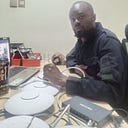IP RATINGS: EXPLAINED
Ingress protection ratings, or IP ratings in short, are determined by the international standard EN 60529 and are a measure of how resistant a device, enclosure, or appliance is against solid objects such as water and dust.
In short, it refers to the degree of protection, resistance, or sealing effectiveness against the intrusion of foreign objects.
IP ratings can also be referred to as IP codes.
These ratings, commonly used in the electrical and technology industries, can usually be found in electrical enclosures, bathroom fixtures, mobile phones, or outdoor use devices like CCTV cameras.
Knowledge of these ratings can be especially helpful when procuring or working with devices, appliances, and enclosures that might require regular, permanent, or partial deployment in a variety of dynamic outdoor environments. Failure to understand and adhere to these ratings when using IP-rated devices and appliances can result in myriad undesirable consequences.
What the two digits in an IP rating mean
An IP rating consists of three parts: the letters IP, which are simply short for ingress protection, followed by two digits, and a third character, which is optional.
The two digits right after “IP” signify the level of protection of the device, and the higher the number after “IP,” the better the protection against ingress.
The first digit refers to protection against solids such as dust. The second digit refers to protection against liquids such as water.
Sometimes this number can be represented by an X meaning that the device or enclosure IP rating is not yet specified.
For instance, IPX6 means that it’s protected against powerful jets of water from whichever direction but dust protection level is unspecified whereas IP6X would mean that the enclosure is totally dust proof but waterproof protection is unspecified.
First digit: Solids
IP66
The first digit denotes the level of protection against foreign solids such as fingers, dust, or tools that might be hazardous if they came into contact with the components.
Second digit: Liquids
IP66
The second digit denotes the level of protection against liquids and moisture in the form of sprays, drips or submersion.
Third character: Supplementary information
Some IP codes might have a letter after the end of the code IPXX and the extra letter denotes supplementary information from the product standard For instance;
Examples;
- An IP65 rating means that the appliance has limited protection from dust and low-pressure water jets from whichever direction, while an IP65W rating means that the appliance has the same protection rating in addition to being able to withstand damp and wet weather.
- IP23D means protection against a wire touching hazardous parts
- IP05 means it’s not protected from solids (the first digit: 0) but is protected from low pressure water jets from any direction (the second digit: 5). IP50 means it’s partly protected from dust ingress (first digit: 5) but is not protected from water ingress (second digit: 0)
Water and weather proof ability
Devices or appliances with IP ratings between the ranges of 44 and 65 can generally be used indoors and outdoors, but any device or appliance with a rating lower than IP44 should only be used indoors.
Any rating beyond IP65 is considered water proof, though the term ‘waterproof’ is subject to certain conditions.
